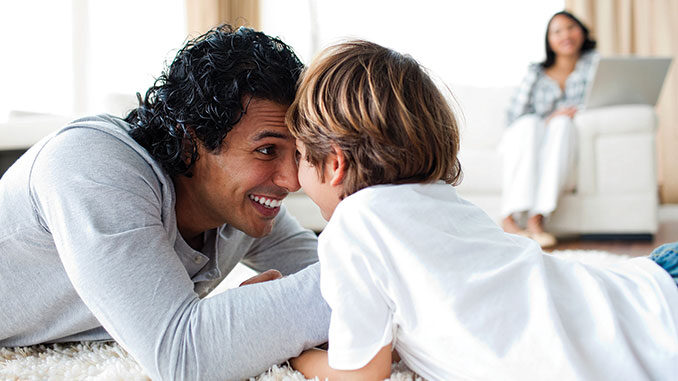
Learning your child’s love language builds stronger bonds
Published: February 3, 2022
By: Pam Moore
Haven’t we all left a copy of The Five Love Languages on our partner’s side of the bed at some point? (Or maybe that’s just me.) According to the book’s author, Gary Chapman, the five love languages are: physical affection, acts of service, words of praise, quality time and receiving gifts.
While you might hope to come home to flowers after an argument, your partner might prefer you volunteer to do the dishes to show you care. According to Chapman, the key to a healthy relationship is for each person to express love in their partner’s preferred love language, instead of their own.
Chapman says this concept applies to children, too. According to child therapist Megan Cronin Larson, a child’s primary love language typically emerges around age three or four. While you can respond to cues from your child to figure out what his or her love language is, in The 5 Love Languages of Children, Chapman encourages parents to use all five to lay a healthy foundation for future relationships.
1. Physical Affection. Research shows that touch is vital to healthy neurodevelopment in infants. But the need for touch — whether it’s a hug or a fist bump — doesn’t end with infancy. Physical affection lets kids know you care, and that you will listen when they’re ready to talk. But what if your child’s love language is touch and you’re not a big hugger? Licensed psychotherapist and play therapist Brenna Hicks recommends parents “keep the physical touch small but consistent. [It] can be as simple as placing your hand on a child’s shoulder as you pass by, rubbing their head a few times on the couch, or giving them a quick kiss on the forehead. It isn’t necessarily long bear hugs.”
You could…
- Let him sit in your lap while you read
- Give a back rub
- Have a WWF-style wrestling match
- Wash her hair
- Hold hands
- Snuggle while watching a movie
2. Acts of Service. As parents, our lives are a never-ending blur of acts of service. How can we possibly do more? And why should we? There is a difference between responding to rapid-fire requests for snacks and help with school projects versus setting your phone aside, making eye contact, and offering to help, or taking time to do something extra-special for your kid.
You could…
- Offer to fix a broken toy
- Deliver breakfast in bed
- Cook his favorite meal
- Cut sandwiches into fun shapes
- Give a manicure
3. Words of Affirmation. Research shows we aren’t helping when we tell our kids they’re great at everything. That doesn’t mean we shouldn’t use praise to connect with them in a meaningful way; rather, we should be deliberate about what we say. Parents should strive to acknowledge the effort, not the outcome. For example, instead of saying “Nice job!” when your kid comes down the slide, you could say, “I noticed how hard you worked to get up the ladder.”
You could…
- Acknowledge how hard she’s working on something specific (e.g. “You’re putting so much effort into practicing your cartwheels/ math problems/ being kind to your little sister.”)
- Say “I love you”
- Tell her three things you admire about her
- Ask if he knows how lucky you feel that you get to be his parent
- “Catch her” being good. (e.g. “I really appreciate you doing your chores without being asked.” or “You were an awesome listener at the park.”)
4. Quality Time. Experts agree play is the optimum way to engage in quality time with young children. Says Hicks, kids “use play as their language and toys as their words. By playing with them, you learn more about them and meet their need for someone to share in their experience.” By adolescence, kids are no longer interested in playing. They are often busy with school, friends, and activities. Jen Harrison, a mom of busy twin teens, says she tries focusing completely on them in the rare moments they are together — and that often happens in the car, which she describes as “our best quality time.”
You could…
- Play hide and seek
- Engage in pretend play
- Go to the library
- Enjoy the outdoors together
- Bake together
- Have a dance party
5. Receiving Gifts. As with the other love languages, the importance of the gift is not the gift itself, but the intention behind it. As Hicks explains, “You can feel very confident that a gift need not cost money or be extravagant for your child to appreciate the extension of love.”
You could…
- Surprise her with a homemade card
- Inscribe a copy of a book you enjoyed at his age and give it to him
- Find an accessory or a piece of clothing you no longer wear and give it to your kids as a dress-up item
- Draw him a picture
- Build something for her if you’re handy (or brave)
No matter what love language you “speak” with your kid, Cronin Larson reminds us that our full presence is the greatest gift we can give our kids. So, put your phone down and connect with your children on Valentine’s Day and every day.
Pam Moore is a freelance writer and author who encourages others to speak the language of love to their children and themselves.
